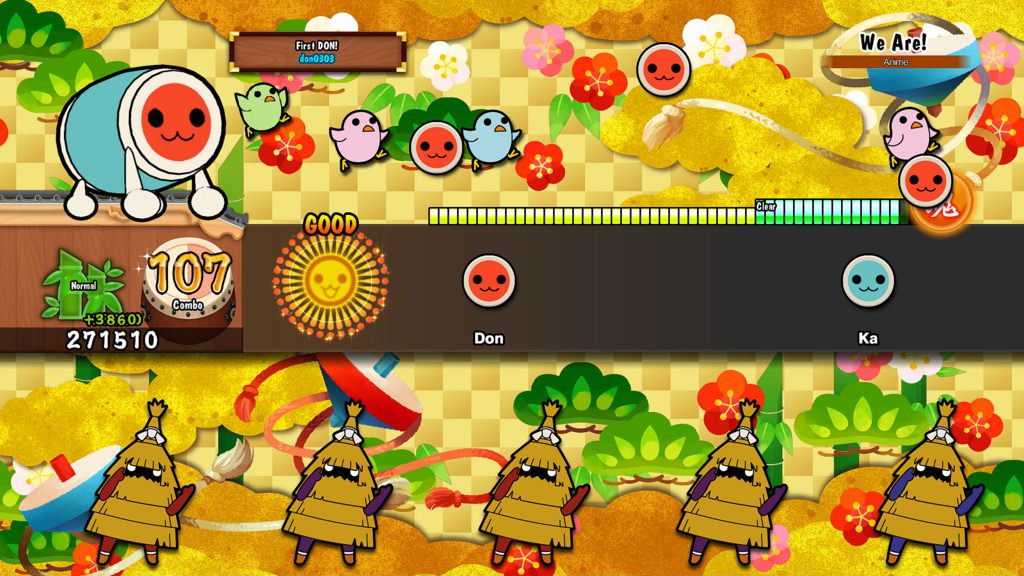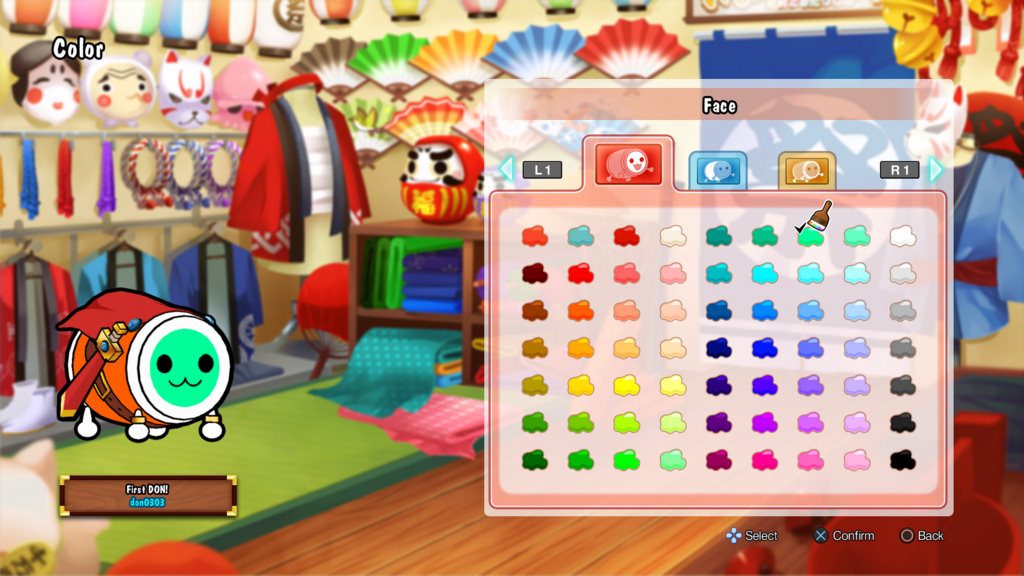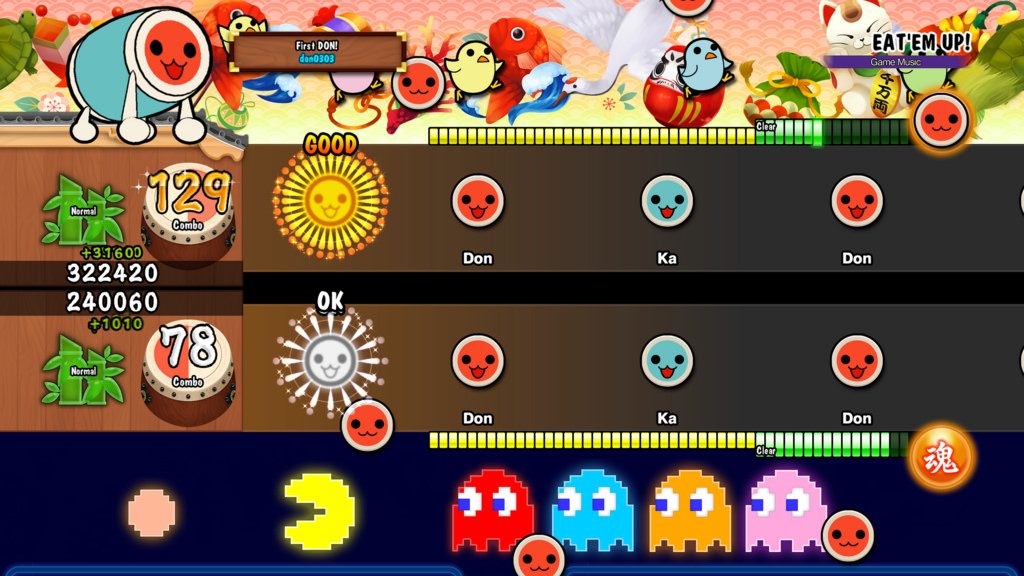Taiko no Tatsujin: Drum Session! review
It’s been fifteen years since Donkey Konga was released for the GameCube and heralded an age of rhythm action games released with nonsense controllers, these days almost anything released with a peripheral designed to enhance the game experience dies a death, so why has Bandai Namco seen fit to bring madcap Japanese Taiko drum game Taiko no Tatsujin to the west for the very first time?
It’s an odd one this, especially when you consider the fact that only the Switch version gets a physical release, along with a large (pricey) set that includes the Taiko controller while the PS4 has to make do with only a digital download. As a result most of the people playing this will be doing so without the game’s most meaningful hook and instead tapping out the beats on a DualShock. So, does the game really lose anything when you don’t have a drum to beat?

The idea here is that you have a row along which icons of varying shapes and colours scroll from right to left and you have to push a button corresponding to that when it passes over an icon, get the timing right and you get a decent score boost and add to your combo, screw it up and you lose your combo and score multiplier, so far, so very rhythm action. Only two inputs are required here, red icons are for a full face hit, while blue ones would require you to hit the rim, on a DualShock you have several control methods to choose from, but this generally amounts to a face button for the red icons and a shoulder button for the blue.
Sometimes you’ll get a long yellow line which wants you to hit as many surface notes as you can, so you’ll need to pound those face buttons. You’ll also need to mash away should you get a balloon icon which has a preset number of hits for you to get before you get the points, or a mallet which asks you to do the same for a big score payout. I really don’t know why there are three separate icons for the exact same action, but that’s where we are right now. Anyway, as a result you’ll be hitting the face buttons for the majority of songs which is an absolute killer on the thumbs joints, I’ve not had crippling pain in my stubby digits since Project Diva.
Speaking of the Hatsune Miku series, your note banging has the same goal here as it did there, get as many successful hits as you can to fill up a bar, fulfil the requirement and Bob’s your uncle. Obviously you’ll want to achieve as high a point score as you can and successive hits for big combos are the way to achieve that, fill up the bar entirely and it all goes a bit multicoloured. This visual feedback is always funny in rhythm action because you just never have the time to pay it any attention because you’re laser focused on hitting those notes, the work of those poor designers just gets ignored in the wake of a high score chase.

Anyway, hitting certain milestones in the tracks you play fills up grids on a bingo card once you’re done, with full lines in whatever direction granting you Don Coins which are used to purchase loot boxes (yes, that’s what I said) which give you stuff to customise your Don (the little drum character standing over your icon bar) with. I had mine dressed as Miku naturally, but there’s a lot of ways you can dress up a drum, which you’ll find out when you take yourself to Ranked Mode.
It’s fun to tackle the songs to practice ready for the harder songs, with Normal providing a decent challenge on most songs, but many people should push for Hard at least. Be warned though, some of these songs are insane, especially Mada Saitama 2000, which is shockingly hard even on normal. There’s a good selection of music here from Japanese pop songs, anime theme tunes and some classical non-Japanese ditties for you to try your hand at, Westerners not into a lot of this will find some comfort in Let it go from Frozen and Zootopia’s Try Everything albeit their Japanese language variants.
You’ll need to give these songs a fair bit of attention, because you don’t get to choose the song or difficulty when you take yourself into the Wild West of the game’s Ranked mode. Here you’ll perform in five songs to determine your skill level and then take on the ghost data of other players around your rank to rise through the levels. A win grants a medal; consecutive wins grant two while a loss sees you lose a medal – get four medals and you rank up; lose four medals and you rank down: simple really, but without adequate practice you’ll be on a hiding to nothing when a difficulty you’re not accustomed to suddenly pops up.
Even without the drum controller there’s a lot to like here. The Don characters are cute and dressing them how you like certainly gives you a degree of ownership on them and your online presence within the game, and even with a two button interface there’s a considerable challenge even on lower difficulty levels. As far as rhythm action goes this certainly isn’t on the level of Project Diva, but with a host of recognisable songs it has something for those not into vocaloid music (although there are a few vocaloid tracks on the song list).

You’ll certainly won’t lose the sense of rhythm when playing with a DualShock, if anything it’ll drag you in a little bit more and you’ll curse yourself for not getting your fingers in gear and hitting a note that you’ll feel you should have hit, as a result this is definitely a worthwhile purchase for anyone who loves a good music game. There’s definitely something to be said about the game really truly shining when you’re playing it on a drum controller as intended, but all things considered the experience does not suffer for its absence.
It’s worth trying to drum up interest in Taiko no Tatsujin and it’s definitely a game that rewards you for sticking with it. I’m not going to bang on much longer but this sort of game was always going to have a niche appeal to it, and it’ll be a shame if it isn’t really a hit, because I’d like to see more games like this coming over to our shores. Drum Session is a lot of fun no matter what way you choose to play, you certainly could do worse than to Taiko look at this.




